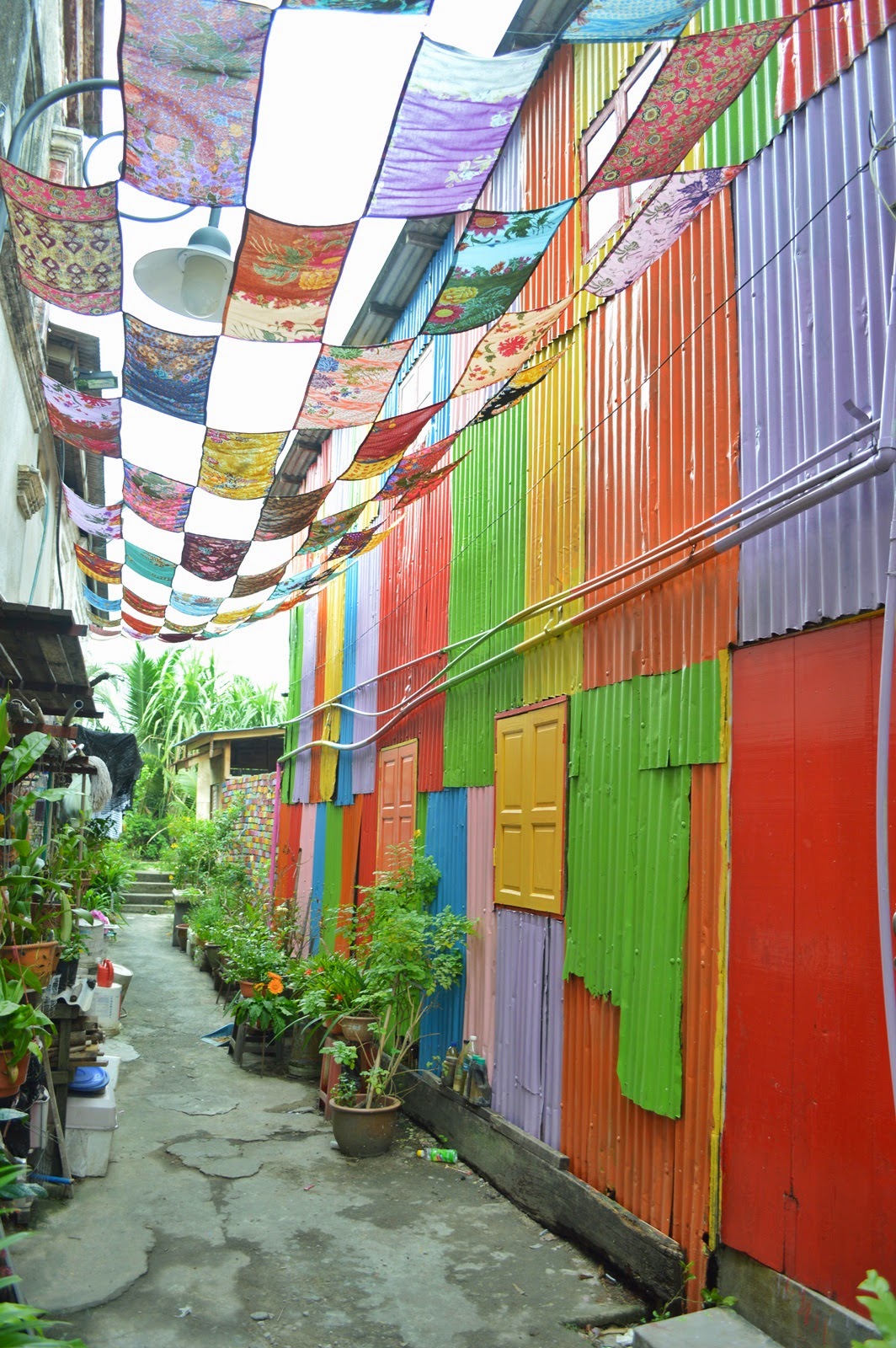Tras salir de la paradisíaca isla de Kapas, emprendimos rumbo a Kuala Terengganu. Hicimos autostop para llegar a dicha ciudad, y de nuevo en menos de una hora alguien se paró a recogernos y llevarnos directos al centro de la ciudad, de nuevo la amabilidad de la gente de aquí nos ayudaba a seguir con nuestro camino.
Kula Terengganu, fue en la antigüedad un centro importante de comercio entre China y Malasia, por ello ya desde el siglo XV varias familias chinas se instalaron aquí, dejando su impronta histórica y arquitectónica. La ciudad a día de hoy a crecido mucho, pero el centro histórico alrededor del estuario del río Terengganu sigue siendo un lugar importante, convertido en la actualidad en una zona comercial y de trasiego obligado para los visitantes y lugareños.
Descubrimos sus encantos y chocamos de frente con el festival de la ciudad, que como por arte de magia se celebraba esos días. Pero sólo nos quedamos un día, pues queríamos seguir nuestras aventuras en otra dirección.
Kuala Terengganu was our quick stopover on the way between Kapas and Melacca. We had so much luck on our way there- we hitchhicked (succesfully) and met some wonderful and helpful people. And the city itself is really nice- especially during the chinese festival (which took place while we were there:)). The chinese influence after centuries of trading contacts is very visible here. And it's one of the many malaysian cities, where graffitti art found it's well earned place on the walls of the old town, making it more colourful and interesting to discover.
Szorcik: W Kuala Terengganu zatrzymaliśmy się tylko przelotem, w drodze z Kapas do Melaki. Mieliśmy wiele szczęścia podczas tej podróży, łapiąc stopa poznaliśmy mnóstwo pomocnych i sympatycznych osób. Samo Kuala Terengganu to dawny port handlowy, ważny dla wymiany towarów z Chinami. Ten chiński wpływ jest do tej pory bardzo widoczny- szczególnie podczas chińskiego festiwalu przypadającego akurat na naszą wizytę. Nasz kilkugodzinny pobyt w mieście stał się wielkim poszukiwaniem murali. Wiele miast w Malezji ozdabia mury zabytkowych części miast graffitti- dzięki czemu miejsca te zyskują na kolorycie, a zwiedzanie staje się prawdziwą przygodą.
Kula Terengganu, fue en la antigüedad un centro importante de comercio entre China y Malasia, por ello ya desde el siglo XV varias familias chinas se instalaron aquí, dejando su impronta histórica y arquitectónica. La ciudad a día de hoy a crecido mucho, pero el centro histórico alrededor del estuario del río Terengganu sigue siendo un lugar importante, convertido en la actualidad en una zona comercial y de trasiego obligado para los visitantes y lugareños.
Descubrimos sus encantos y chocamos de frente con el festival de la ciudad, que como por arte de magia se celebraba esos días. Pero sólo nos quedamos un día, pues queríamos seguir nuestras aventuras en otra dirección.
Kuala Terengganu was our quick stopover on the way between Kapas and Melacca. We had so much luck on our way there- we hitchhicked (succesfully) and met some wonderful and helpful people. And the city itself is really nice- especially during the chinese festival (which took place while we were there:)). The chinese influence after centuries of trading contacts is very visible here. And it's one of the many malaysian cities, where graffitti art found it's well earned place on the walls of the old town, making it more colourful and interesting to discover.
Szorcik: W Kuala Terengganu zatrzymaliśmy się tylko przelotem, w drodze z Kapas do Melaki. Mieliśmy wiele szczęścia podczas tej podróży, łapiąc stopa poznaliśmy mnóstwo pomocnych i sympatycznych osób. Samo Kuala Terengganu to dawny port handlowy, ważny dla wymiany towarów z Chinami. Ten chiński wpływ jest do tej pory bardzo widoczny- szczególnie podczas chińskiego festiwalu przypadającego akurat na naszą wizytę. Nasz kilkugodzinny pobyt w mieście stał się wielkim poszukiwaniem murali. Wiele miast w Malezji ozdabia mury zabytkowych części miast graffitti- dzięki czemu miejsca te zyskują na kolorycie, a zwiedzanie staje się prawdziwą przygodą.













No hay comentarios:
Publicar un comentario